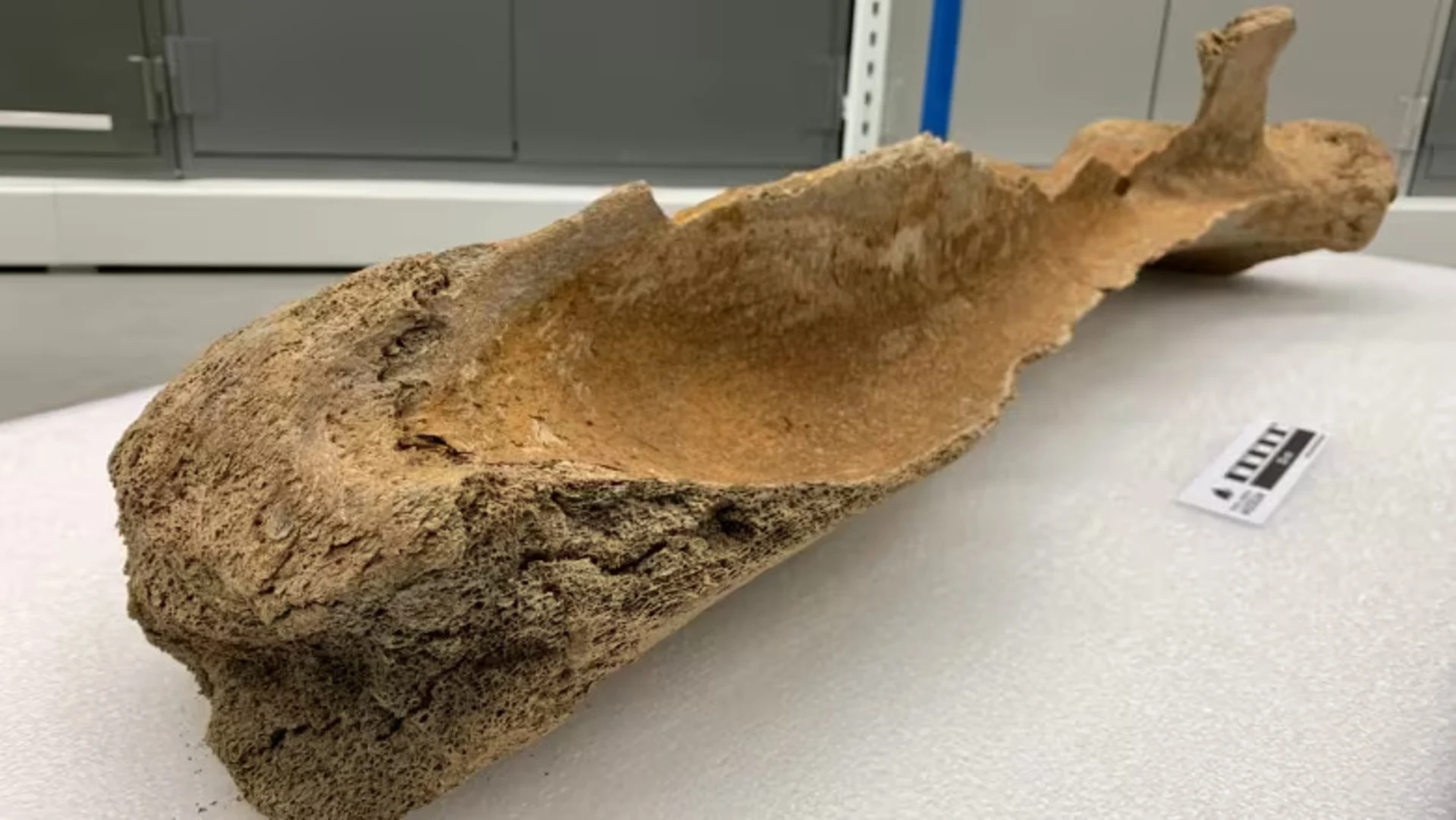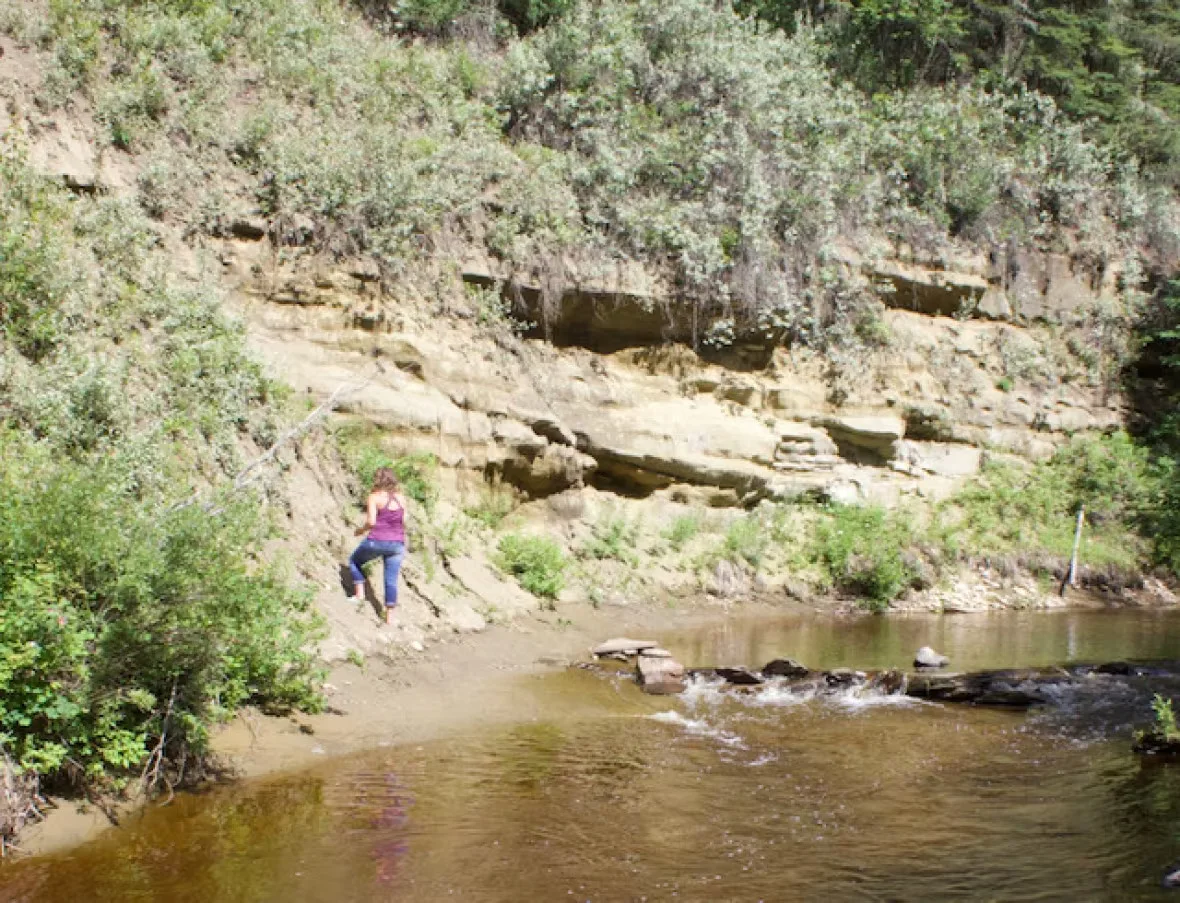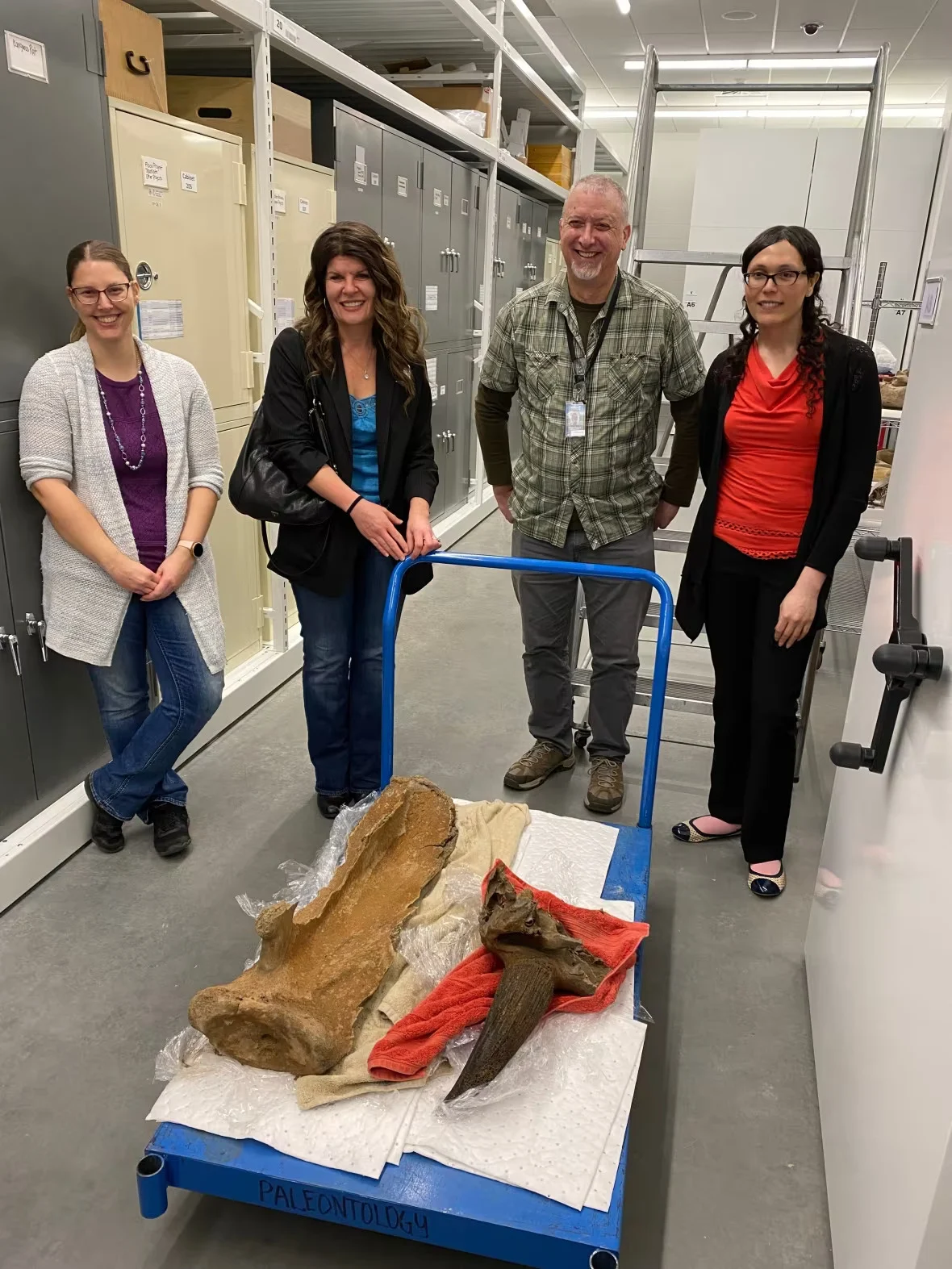
Retired teacher finds mammoth shoulder blade bone while walking dogs
Stacy Long was walking her two Great Danes west of Edmonton last spring when she found what appeared to be a large bone.
Long hoped the metre-long object was a bone, but because her dogs, Bart and Boss, didn't seem at all interested, she thought it might just be piece of petrified wood.
Though the dogs weren't intrigued, the quaternary paleontology team at the Royal Alberta Museum in Edmonton was.
Long submitted photos of the object to multiple museums and Royal Alberta Museum staff recently told her they suspected she had found a partial mammoth shoulder blade bone. The museum estimates the animal it came from was alive about 10-14,000 years ago.
The museum is not publicizing the exact location of the discovery because it wants to prevent people from searching the area. Paleontologists plan to visit the site in the spring.
"I was definitely shocked," Long told CBC News on Thursday.

Long's Great Danes, Bart and Boss, were present during, but not excited by, the discovery. (Submitted by Tracy Long)
MUST READ: Study shows dinosaurs were 'struck down in their prime' by asteroid
This isn't Long's first discovery.
The retired teacher previously found part of a hadrosaur's tibia bone, which the Royal Tyrell Museum identified for her.
She has also found what the Royal Alberta Museum believes to be a partial skull of an ancient bison.
Paleontologist Katherine Bramble said Long's mammoth discovery is special because the museum doesn't have many specimens. The museum has one other mammoth shoulder blade, but it belonged to a juvenile, not an adult.
SEE ALSO: Scientists unearth megaraptors, feathered dinosaur fossils in Chile's Patagonia
"They're not as common to find as other things, like dinosaurs," she said.
She said most mammoth specimens are found in sand and gravel pits, so she and her colleagues were very excited that a member of the public found one in a different context.
Long has donated the bone to the museum, where it will be added to its research and reference collection.
The museum's experts don't yet know which type of mammoth the bone came from. Two species, the Columbian and wooly mammoths, are known to have lived in Canada. Columbian mammoths were the bigger of the two.

Stacy Long explores the river valley during the warmer months. (Submitted by Stacy Long)
SEE ALSO: Earth's core appears to have reversed its spin. So what does this mean?
The museum has been using illustrations of the woolly mammoth in its official logos since 1990.
Bramble said the museum will compare Long's bone to other mammoth bones that have been found.
Staff could also use radiocarbon dating to determine its age.
Long said she donated the specimen to the museum because she wants to share it with others.
"I'm excited for little kids to be able to go there and see it and learn from it," she said.

Stacy Long meets the quaternary paleontology team (Katherine Bramble, Chris Jass and Christina Barron-Ortiz) at the Royal Alberta Museum. (Royal Alberta Museum)
She said she appreciated how welcoming museum staff were. They gave her a tour and educated her about what she had found.
Since the museum shared her story on social media yesterday, Long said a lot of former students have been contacting her to find out more about it.
"A few of them are teachers now themselves so they've been asking lots of questions," she said.
Thumbnail Courtesy of Jamie McCannel/CBC News.
This article written by Madeleine Cummings for CBC News.





